ASRock Industrial NUC BOX-155H Power Consumption and Noise
The included power adapter is giant. It is a 120W Ac Bel unit, which is relatively nice, but it is longer than the NUC-size chassis. A fair criticism is that the system may be small, but the power adapter is large.
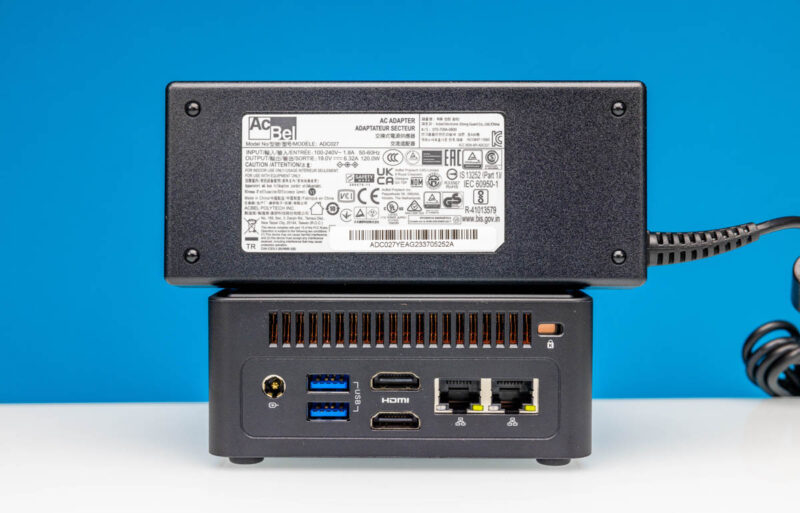
At idle, the package power consumption is just over 7W and the system power consumption is closer to 8W with around 37- 38dba in our 34dba noise floor studio.
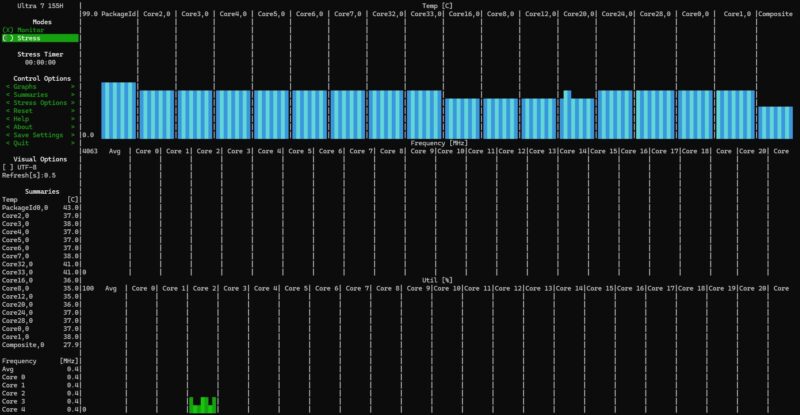
Putting the system under stress-ng load we see the package power consumption jump to just over 63W for a brief period of time as the system also jumps to 73-80W. The noise of the system will hit 40dba in the same environment.
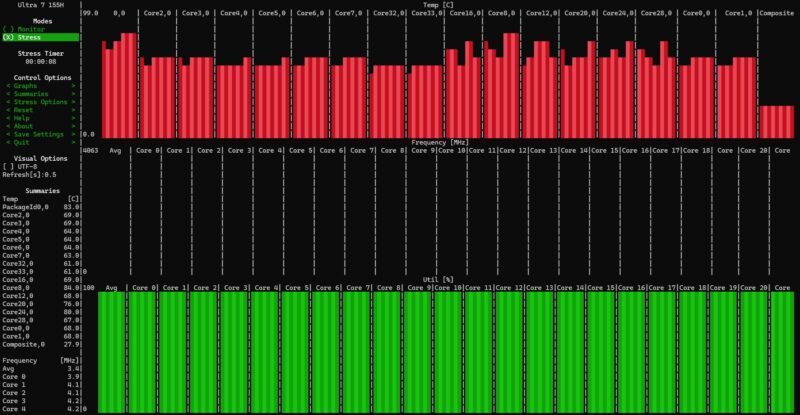
A few seconds later, the system will fall into the 38-39dba range for consistent performance with package power consumption around the 28W limit and a 34-37W system power consumption level.
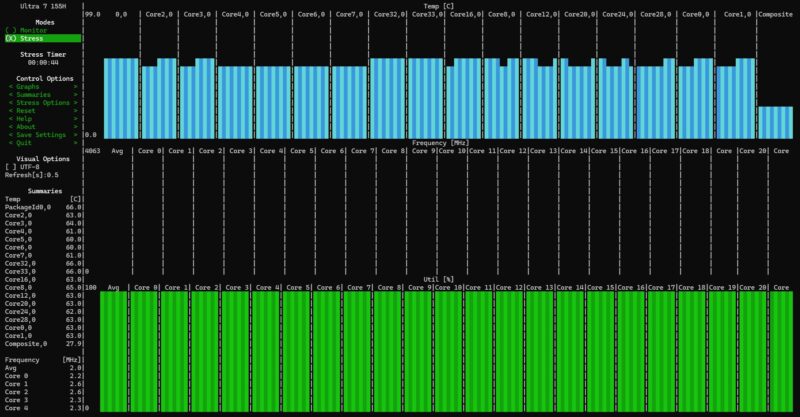
After that initial burst, this system just sits at this performance level. We tested the system for 12 hours and it just stayed in that 28W package power level.
Key Lessons Learned
One of the biggest key lessons learned is about the power consumption and noise when the system is in its Performance mode. We put this system into the performance mode for the NPU AI inference testing using the AI Guru software. Immediately, one could see the idle power consumption roughly double. Accordingly, the noise would increase to well over 40dba to the point that it was distracting to me trying to speak next to the unit from about a meter away.
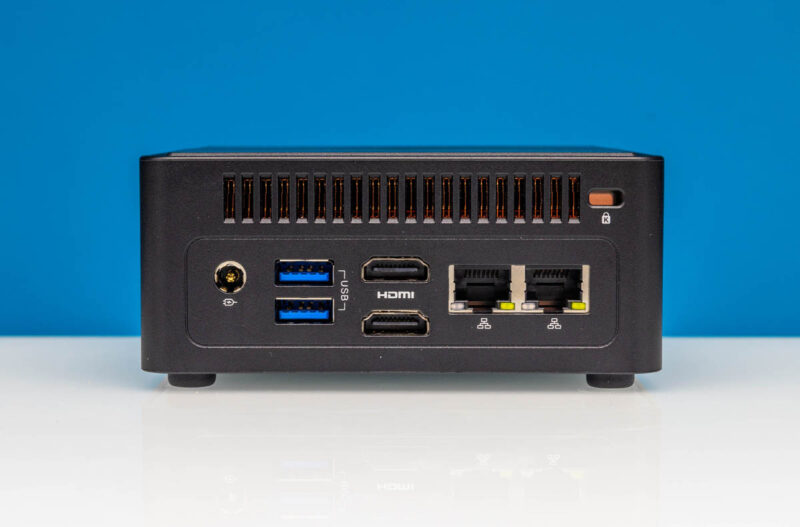
The other key lesson learned is really about the CPU. Just for some sense of how much these mini PCs have now in terms of heterogeneous compute, we have:
- Intel P-cores
- Intel E-cores
- Low-power Intel E-cores
- iGPU for graphics and AI inference
- Video encode/ decode, including AV1
- NPU for AI inference
If you have seen the video where we went into doing AI inference on the GPU and CPU via a Sony FX30 camera while encoding 4K video using AV1 encode, it is a good example of what can happen when all of these parts work together.
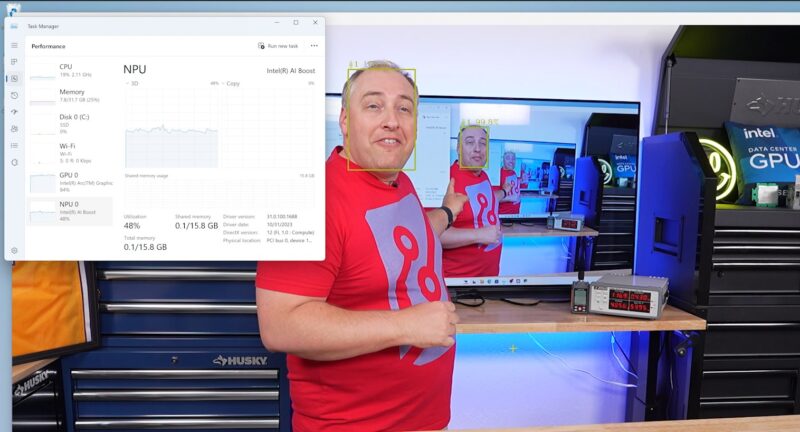
For those still running older Intel Xeon E5 V1/ V2 systems, not only are newer parts 16 cores/ 24 threads and much smaller and lower power but there is a huge amount of space dedicated to non-CPU computing on the SoCs these days.
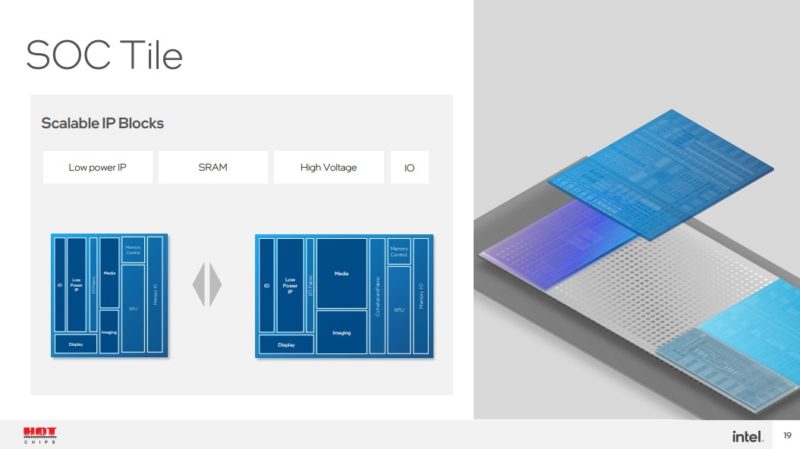
Intel Meteor Lake is showing just how fast these new platforms are diverging from old paradigms of just having homogeneous CPU cores, memory, and storage in a box.
Final Words
At some point, and perhaps this is the moment, these mini PCs are going to get very exciting again. Taking a step back, this is still 16 cores and up to 96GB of memory, two or three SSDs, and in a small package that, when running under load, is 35-40W. Adding a Coral TPU or something of that nature to another platform is always an option to get more AI inference performance. At the same time, getting higher-end video encode/ decode, GPU, and the NPU in this generation makes it feel like we are really getting AI acceleration built-in without adding a NPU. If you are a developer looking to do automation with AI, then a platform like this might be interesting. These NPUs are going to be built into most client platforms going forward, and so it is like “free” AI acceleration.
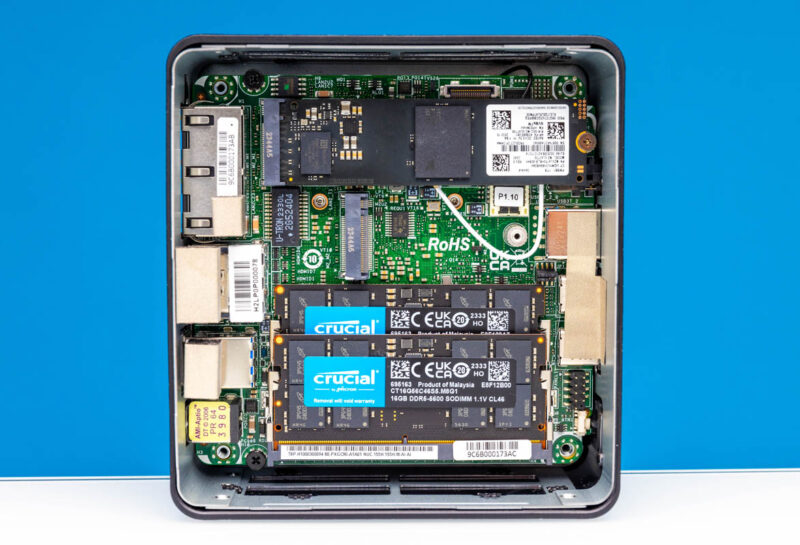
Combine this with Thunderbolt 4/ USB4 connectivity and there is even more room to expand despite this being such a small system. At $699 list price, it is not cheap, but at least it offers something different than the previous generations.
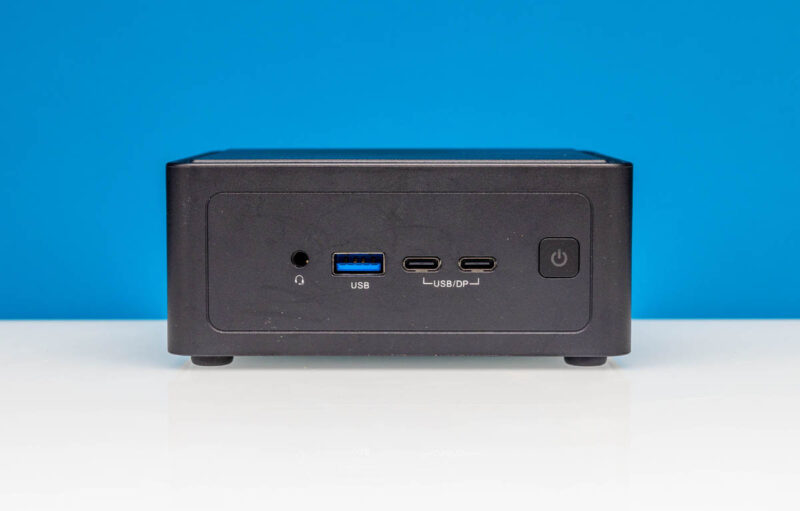
This may not be anywhere near the biggest system we reviewed, even from ASRock’s family this month. At the same time, these little machines are getting better with each generation, and Meteor Lake offers something very different.




$700 Barebones?! Seriously? I swear, the rising cost of GPU MSRPs *coughnvidiacough* has shown manufacturers that consumers will pay increased prices across the board to the point that you now are paying a bit under $1k (after tax) to get a box that is unusable without another $400-500 worth of components just to get it running.
I won’t let Nvidia take all the blame though, as Intel has been bleeding money trying to keep up with AMD for years now (via R&D, Fab expenditure, and deals (aka subsidies) with resellers to carry their CPUs in laptops, tablets etc). And since Apple dropped Intel when they released the M1, Intel lost even more $. Now they’re passing the cost of all those endeavors to us, individual consumers. They can’t raise prices for enterprise too much because AMD has them completely beat there with TR and Epyc, so we get this $700 paperweight instead.
Bit of a shame they saddled it with only a 2.5G NIC, when 10G has been out for decades now and higher end stuff is already 25G. Seems a shame to make something that can perform well but then only give it a slow interface to the outside world.
Is it possible to run Proxmox VE on this little box?